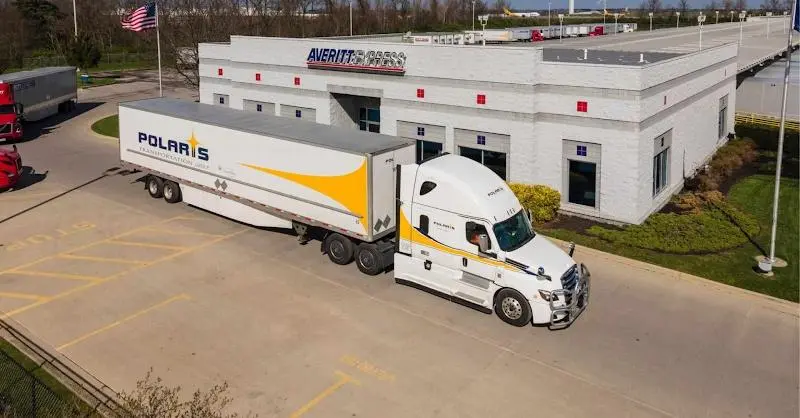Key Takeaways
- Understand the complexities of cross-border logistics to streamline processes.
- Adhere to regulations to ensure compliance and avoid disruptions.
- Selecting the right shipping partner is key to optimizing transport efficiency.
Table of Contents
- Understanding Cross-Border Logistics
- Key Regulations and Compliance
- Optimizing Transport Routes
- Reducing Shipping Delays
- Choosing the Right Shipping Partner
- Understanding Customs and Duties
- Real-Life Case Studies
- Future Trends in Cross-Border Shipping
Understanding Cross-Border Logistics
Cross-border shipping between Canada and the US is vital to North America’s trade landscape. Understanding the logistics involved is crucial for businesses aiming to efficiently transport goods across the border. It entails more than merely moving items from one country to another; it involves managing various supply chain processes, each with unique challenges and opportunities.
Businesses considering shipping to the US can explore solutions tailored to their transportation needs. This involves evaluating logistics frameworks designed to minimize delays and optimize costs. Integrating transport systems and collaborative planning with suppliers and distributors contribute significantly to smooth cross-border operations. Staying well-informed about global shipping trends, as highlighted in BBC News, can help businesses prepare for potential disruptions and leverage emerging opportunities.
Key Regulations and Compliance
Compliance with international shipping laws and regulations is paramount in cross-border trade. This encompasses many requirements, including tariff classifications, export permits, and adherence to safety standards. The complexity of these regulations can vary significantly depending on the type of goods being transported, making it essential for businesses to stay updated on legal requirements for each shipment.
Understanding and adhering to these regulations is imperative to avoid costly fines and disruptions. Engaging with customs brokers or legal experts familiar with cross-border shipping laws can be a wise investment for businesses. They can provide insights into upcoming regulatory changes or updates, ensuring shipments continue to move smoothly without unnecessary halts, thereby reducing the chances of facing unexpected penalties or delays.
Optimizing Transport Routes
Optimizing transport routes is more than a cost-saving measure; it is crucial for timely delivery and customer satisfaction. By employing advanced data analytics and leveraging technology, companies can map out routes that best balance efficiency and cost-effectiveness. This involves considering distance, traffic patterns, and carrier schedules.
Real-time tracking and monitoring systems are increasingly being utilized to make instant adjustments to routes in response to road closures, adverse weather conditions, or unexpected delays. Moreover, collaborative logistics platforms allow businesses to share routes and freight space, further optimizing transport operations and reducing environmental impact by minimizing unnecessary mileage and fossil fuel use.
Reducing Shipping Delays
Shipping delays can pose significant business challenges, impacting supply chain reliability and customer satisfaction. Delays may arise from various factors, such as customs processing times, port congestion, or logistical bottlenecks. Fortunately, predictive analytics tools are available to help businesses forecast potential delays and prepare their responses accordingly.
These tools equip businesses with the ability to identify trends that may lead to delays by analyzing historical data and current conditions. Contingency planning and effective communication channels with partners across the supply chain can further ensure that alternative measures are ready should disruptions occur. For more insights on industry best practices, Forbes’ Logistics Insights provides valuable perspectives and strategic advice.
Choosing the Right Shipping Partner
Choosing the right shipping partner is a critical decision that affects a company’s ability to effectively and reliably conduct cross-border business. The right partner can offer valuable insights and expertise in navigating complex shipping requirements and ensuring compliance with customs regulations.
Factors to consider when selecting a shipping partner include their expertise in international logistics, the range of services they offer (such as customs brokerage and freight forwarding), and their reputation within the industry, as evidenced by past successes and customer reviews. Building strong partnerships with experienced logistics providers can enhance operational efficiency and boost customer satisfaction by ensuring timely and reliable delivery of goods.
Understanding Customs and Duties
Customs and duties are integral components of international trade and directly impact the cost and speed of shipments. Calculating and managing customs duties requires a thorough understanding of tariff classifications, preferential trade agreements, and accurate documentation.
To avoid potential delays and unexpected expenses, businesses must maintain meticulous records of their transactions and remain vigilant about changes in trade policies. Engaging with professional customs brokers can further assist in navigating these complexities, ensuring that goods pass through customs efficiently and without unnecessary additional costs.
Real-Life Case Studies
Examining real-life case studies offers invaluable insights into the practical aspects of successful cross-border shipping. These case studies highlight strategies companies have employed to overcome common challenges and capitalize on growth opportunities. They provide a practical context that enriches theoretical understanding by showcasing tangible outcomes.
Real-world examples illustrate how businesses adapt their logistics strategies to evolving market conditions. By learning from others’ experiences, companies can improve their planning processes and implement robust frameworks for handling cross-border logistics more effectively.
Future Trends in Cross-Border Shipping
The future of cross-border shipping is poised for transformative changes driven by technological advancements. Artificial intelligence, blockchain technology, and autonomous vehicles are innovations set to redefine international logistics. AI, for instance, can optimize supply chains through enhanced forecasting and decision-making capabilities, while blockchain offers increased transparency and security in transaction records.
As these technologies become more prevalent, businesses can expect reduced operational costs and increased efficiencies. Moreover, embracing these innovations could open new avenues for competitive advantage and expansion into previously untapped markets. Staying updated on technological advancements and being willing to adapt to these changes will be critical for businesses aspiring to thrive in the evolving landscape of cross-border trade.










